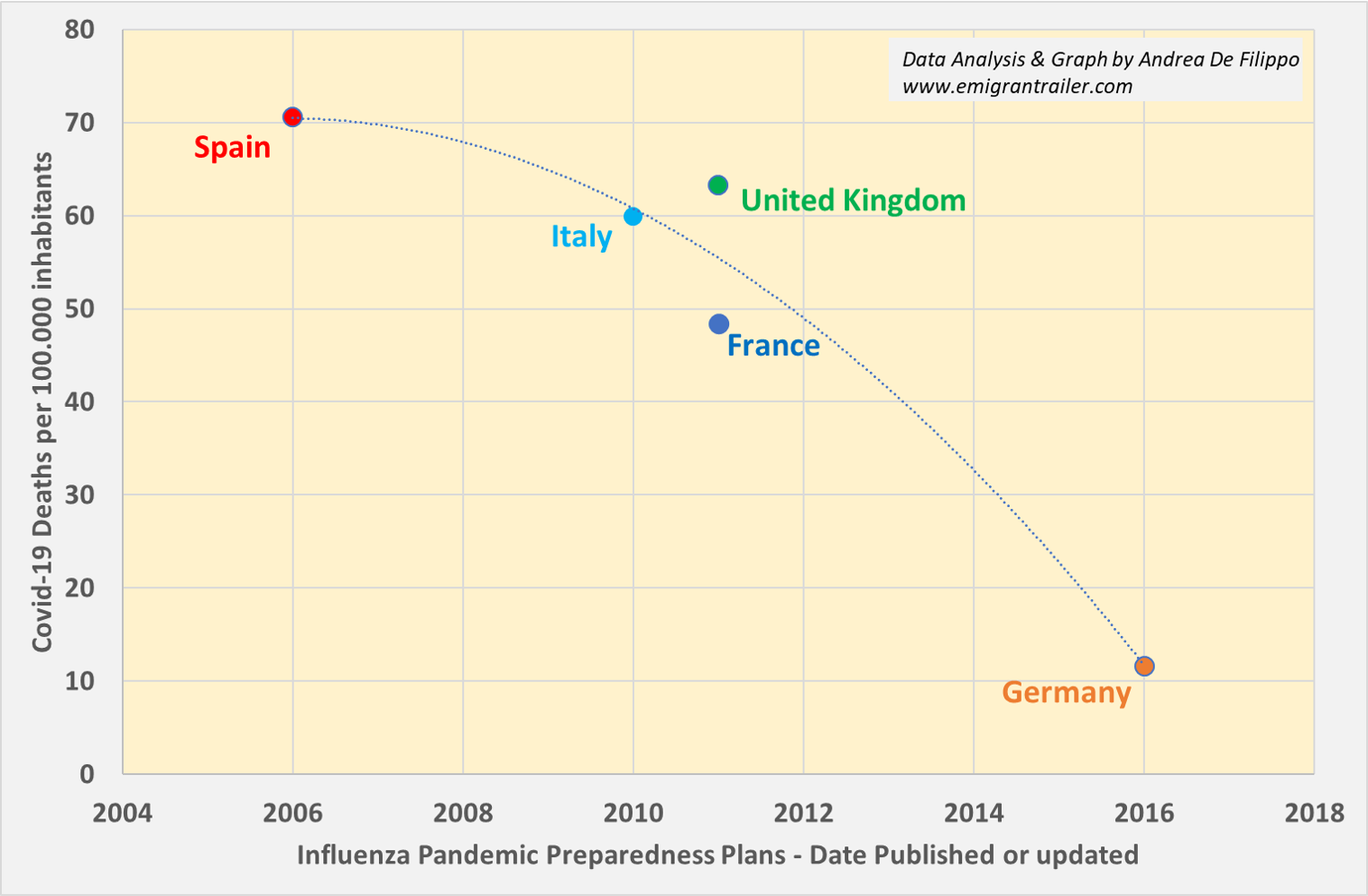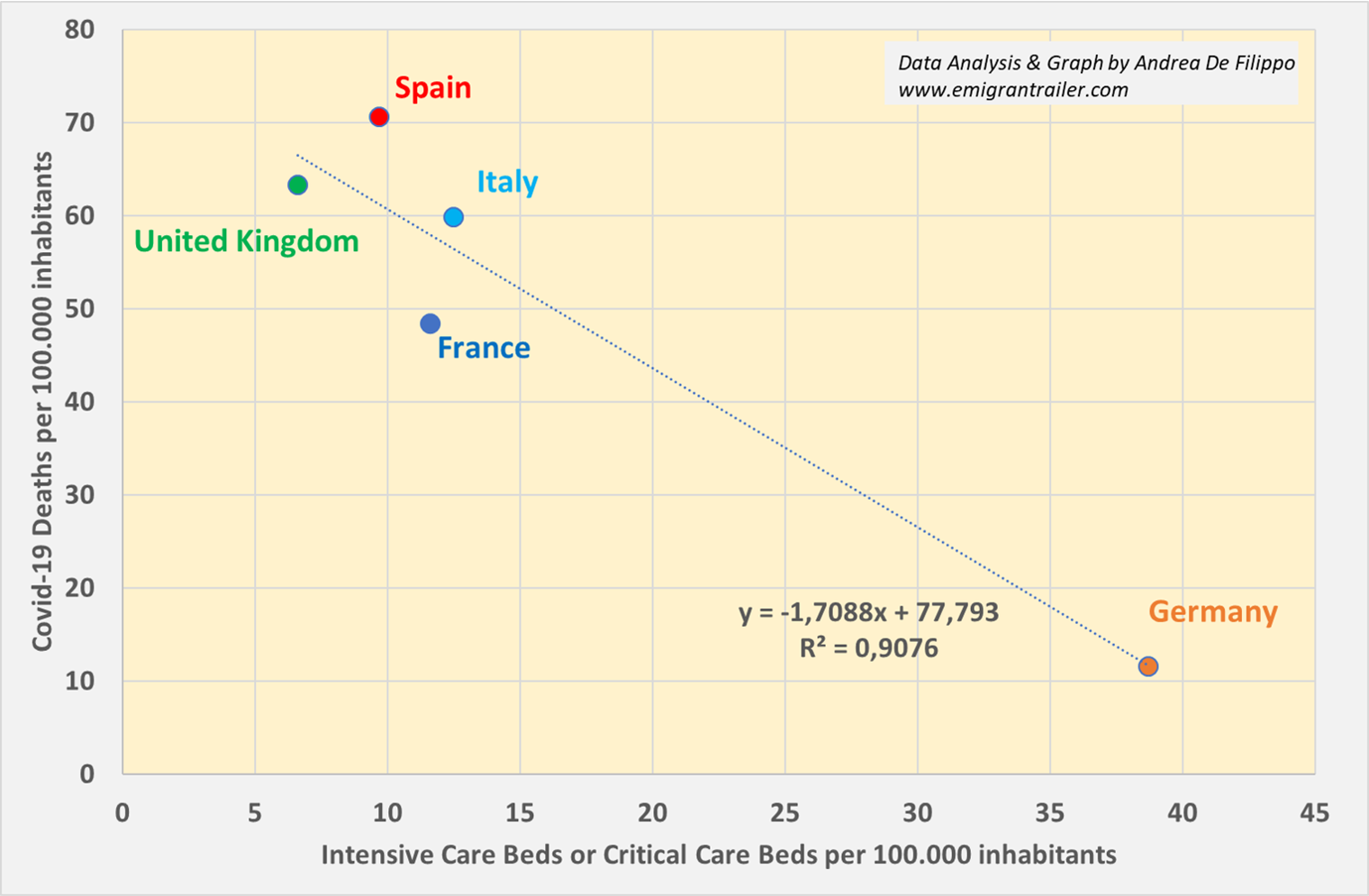Most of the European countries had a larger number of deaths in the first weeks of the pandemic, specifically between March and end of May 2020:
- 86% of the current deaths documented in Italy;
- 82% of the current deaths documented in Spain;
- 82% of the current deaths documented in United Kingdom;
- 81% of the current deaths documented in Germany;
- 79% of the current deaths documented in France;
This is the natural consequence of an unexpected pandemic.
However, as everybody knows, the level of magnitude in terms of deaths has been completely different among these five highly populated countries in Europe. Specifically, in these months, I have been often asking myself why Germany was able to contain the absolute number of deaths compared to the other four big countries. In fact, excluding the last four weeks already characterized by the second wave, this is the photography of the situation updated at October 11th:
- 9.615 deaths documented in Germany (about 83 Million of inhabitants);
- 32.449 deaths documented in France (about 66 Million of inhabitants);
- 32.929 deaths documented in Spain (about 47 Million of inhabitants);
- 36.140 deaths documented in Italy (about 61 Million of inhabitants);
- 42.760 deaths documented in United Kingdom (about 67 Million of inhabitants);
The most likely answer to this question comes from the updated level of preparation to face a pandemic.
To verify this theory I made a short research looking at the published or updated dates of influenza pandemic preparedness plans (https://www.ecdc.europa.eu/en/seasonal-influenza/preparedness/influenza-pandemic-preparedness-plans):
- 2016 for Germany;
- 2011 for France;
- 2011 for United Kingdom;
- 2010 for Italy;
- 2005/2006 for Spain;
Germany has effectively the most updated influenza pandemic preparedness plans compared to the other four countries.
To make a more appropriate evaluation to support this theory, I decided to graph the number of Covid-19 deaths per 100.000 inhabitants with respect to these published dates.

Figure 1 shows a good correlation, where the country with the most updated plan (Germany) has the lowest number of deaths, and the country with the less updated plan (Spain) has the highest number of deaths.
Why is this correlation important?
It is crucial because, with the begin of the second phase, I do expect that all countries have implemented all necessary measures to face the pandemic situation, with the learning of the first phase and from those countries that had an already updated or very detailed plan to face this kind of situation.
Since 2011 (so I hope someone read it, https://doi.org/10.1016/j.phrp.2011.11.048), it is also available a sensitivity analysis of the parameters of Korea’s Pandemic Influenza Preparedness Plan, published by the Korea Centers for Disease Control and Prevention. This report is nowadays important for two reasons:
- South Korea is one of the worldwide countries that in 2020 was capable to contain the dramatic effects of the pandemic, with less than 500 documented deaths for a population of about 52 Million of inhabitants;
- in the conclusions of the report, the authors stated that appropriate contingency planning must consider a rapid expansion of intensive care unit (ICU) capacity;
The latter information is very relevant when we go back to analyze the European countries.
In fact, if we graph the number of Covid-19 deaths with respect to intensive care unit beds or critical care beds per 100.000 inhabitants (Figure 2), it is possible to understand “why Germany was able to contain the number of the deaths during the first wave” and it is also possible to find a good linear relationship: higher the number of ICU capacity, lower is the number of deaths.

Is this a trivial conclusion? Probably yes. However, this is a conclusion supported by data, providing in addition an ideal number of ICU beds required to contain future deaths below a reasonable threshold, especially if we look at the rising curves of hospitalized positive cases of last few weeks in October and November.
So, the question now is: with the start of the second wave, beside the “easy and fast decision” to close most of activities to reduce the contacts, have all the governments of these countries (and the other in Europe and Worldwide) provided a rapid expansion of intensive care unit capacity in the last few months?
If not, what are we waiting for? Has this plan already been activated?
To me it is not yet clear.
Andrea De Filippo
_____________________________________________________________
Other Covid-19 Analysis can be found here: https://www.emigrantrailer.com/category/covid-19/



